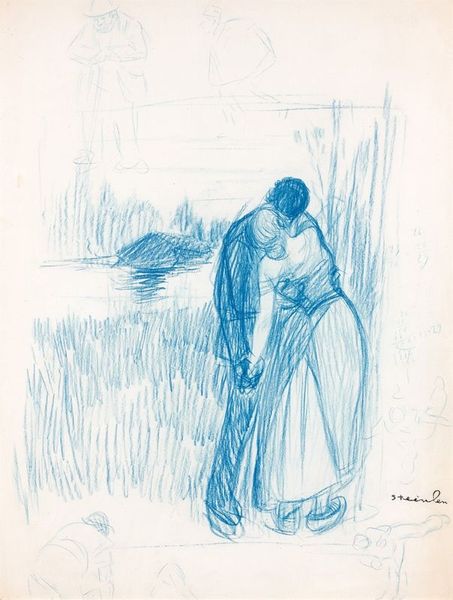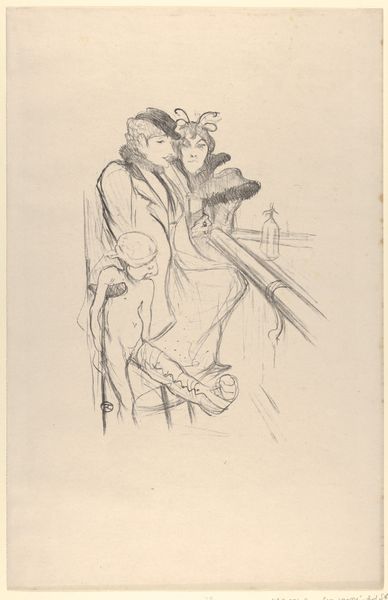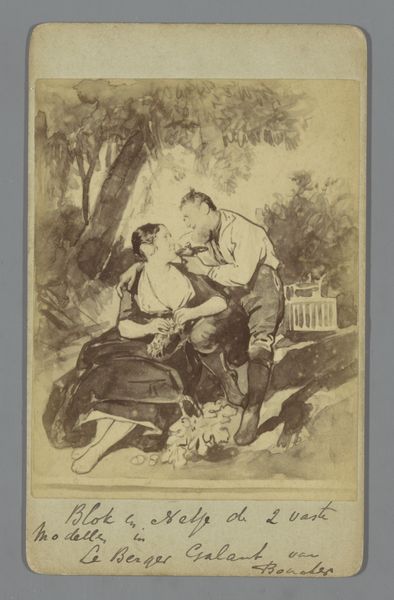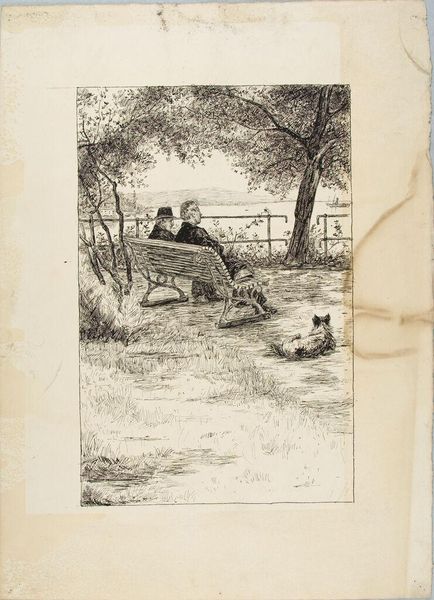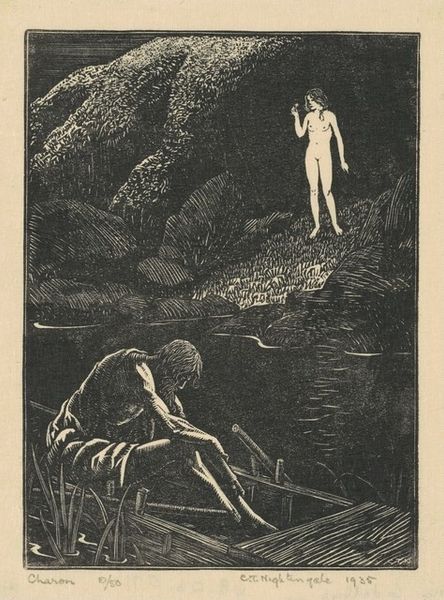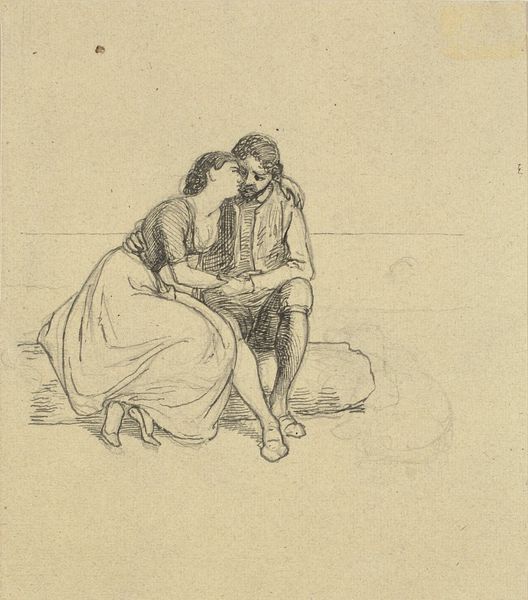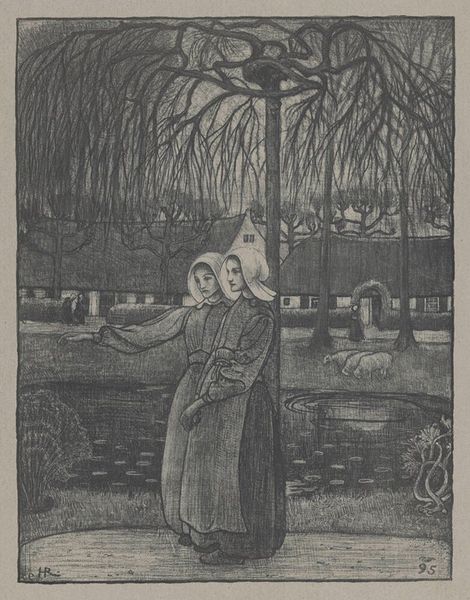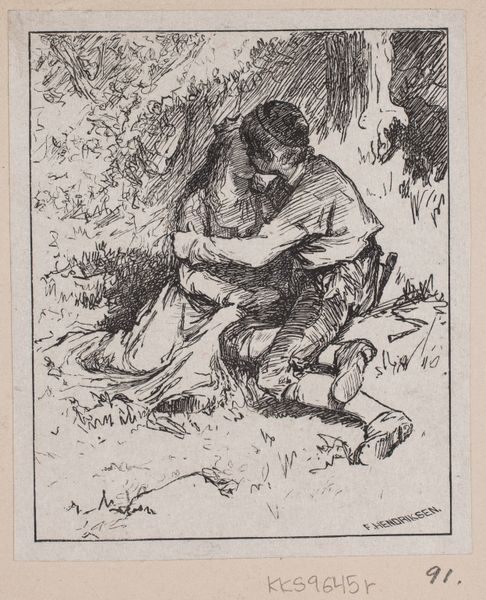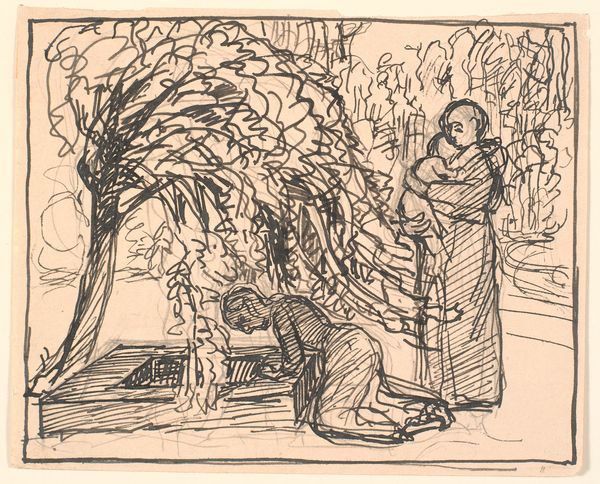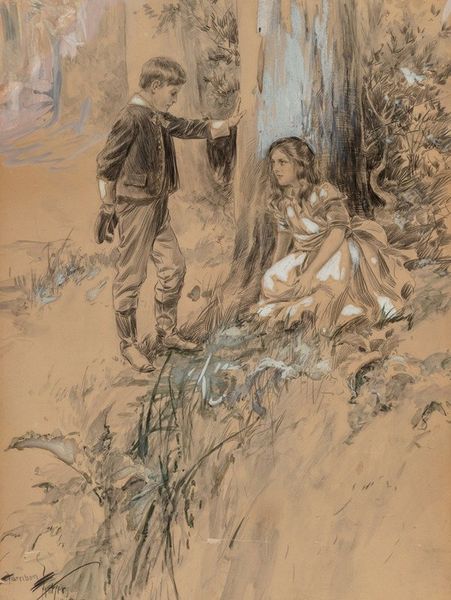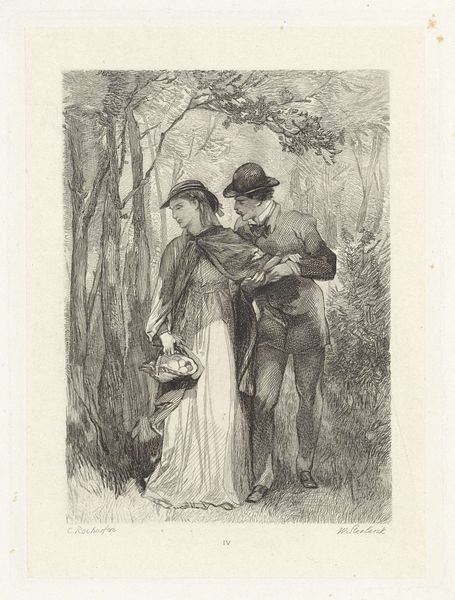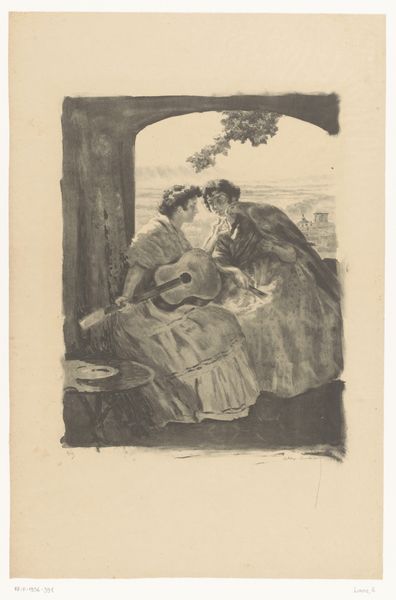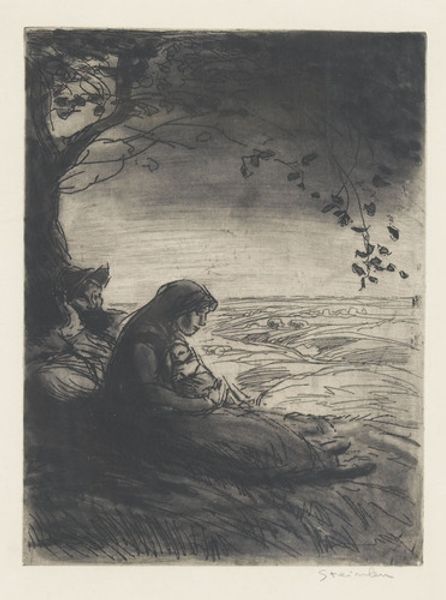
drawing, pencil
#
portrait
#
drawing
#
light pencil work
#
impressionism
#
pen sketch
#
pencil sketch
#
sketch book
#
incomplete sketchy
#
landscape
#
figuration
#
personal sketchbook
#
sketchwork
#
sketch
#
pen-ink sketch
#
pencil
#
sketchbook drawing
#
genre-painting
#
sketchbook art
Copyright: Public domain
Curator: Before us is "Couple," a pencil drawing by Théophile Alexandre Steinlen. Editor: It feels incredibly intimate, doesn't it? The texture of the paper itself seems part of the narrative. I'm drawn to the rough quality of the pencil strokes; they convey a sense of immediacy, as if capturing a fleeting moment. Curator: Absolutely. Steinlen was very active during the time of the *fin de siècle*, and particularly engaged with representing working-class life. He made his mark in Parisian periodicals with illustrations reflecting the societal climate of the period. Editor: You see it in the textures. The heavy strokes that delineate the man’s suit contrast with the lighter lines suggesting the woman's simple attire. The emphasis on labor extends to the visible marks of creation. It really speaks to the division of labor prominent at that time. I see Steinlen reflecting this, bringing it into the foreground. Curator: Indeed, the very medium—pencil on paper—suggests accessibility, a departure from the more lavish materials associated with high art. This contributes to its appeal among the masses. Steinlen’s background as a political cartoonist shines through in his choice to portray ordinary people in relatable situations. He really champions their plight through this humble mode of representation. Editor: And even though the work seems incomplete, that openness is telling, because he doesn’t box them in. What strikes me is their relationship to the landscape: a kind of pensive distance from the cultivated fields. Perhaps an allegory on the worker’s connection to land and labor? Curator: It also invites us, the viewers, to contemplate their lives beyond the frame, the socio-political structures impacting their conditions. Editor: Yes, and the institutional forces framing what's valued visually. It prompts you to think, whose story are we usually shown and why? Curator: Definitely food for thought. I find myself drawn back to the technique - it's quite amazing to express so much emotion using so little. Editor: Right, it demonstrates that the most profound statements can be crafted from the simplest means. Thank you for pointing out the layers beneath what appears to be an ordinary scene!
Comments
No comments
Be the first to comment and join the conversation on the ultimate creative platform.
